* (restored)

Cosey Fanni Tutti is a multidisciplinary artist whose extraordinary lifetime work I’ve long been in awe of. Back in early 2012, over at this ‘ere blog’s old Google-hosted premises, the mighty Sypha compiled the authoritative Throbbing Gristle Day. Each of those four former TG members has a fascinating story to tell. Today it’s Cosey’s turn in the spotlight and she demands your full attention:
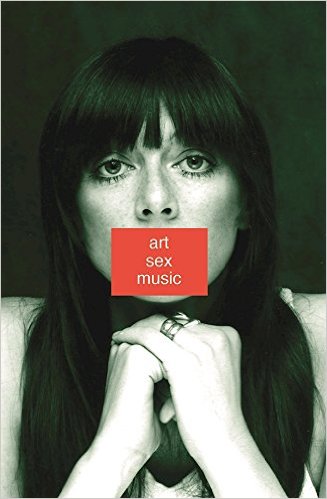
Faber publication due April 2017.
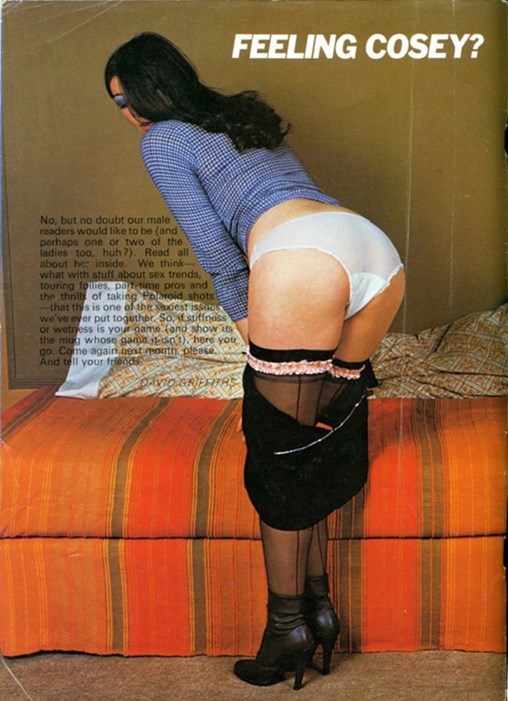
Fiesta vol 10, no. 6, 1976.
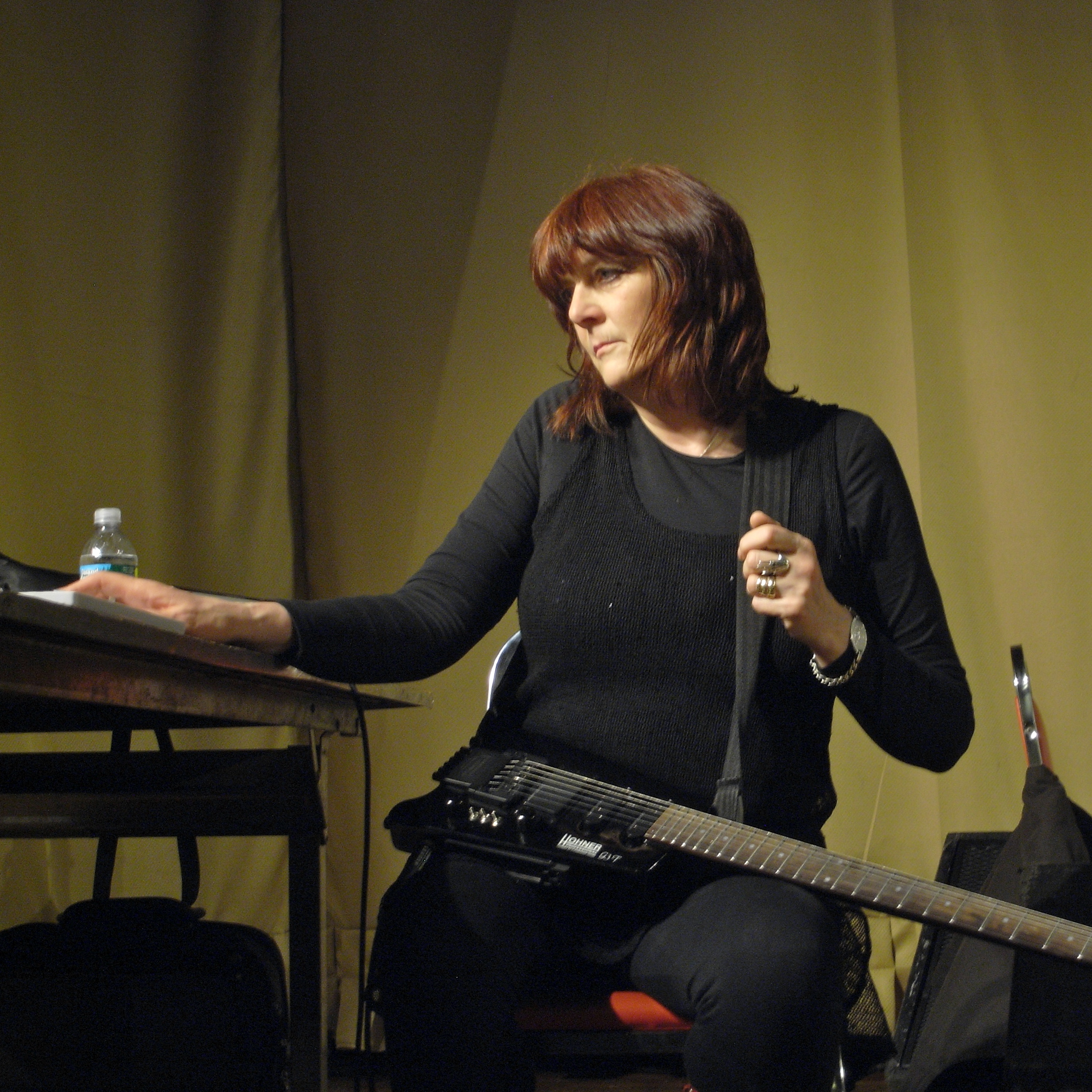
Cosey with Throbbing Gristle at Tramway, Glasgow 2009.
Cosey Fanni Tutti (born Christine Newby; 4 November 1951) is a performance artist and musician best known for her time in the avant-garde groups Throbbing Gristle and Chris & Cosey.
She was a performer with COUM Transmissions of which she was a founding member in 1969. Her addition changed the nature of the group, which, when she joined, was still mostly a musical venture. From that point on, COUM performances became events or, in 1960s parlance, happen-ings, involving props, costumes, dance, improvisation and street theatre. As an installation artist, she was selected in 1975 to represent Britain at the IXth Biennale de Paris.
https://en.wikipedia.org/wiki/Cosey_Fanni_Tutti
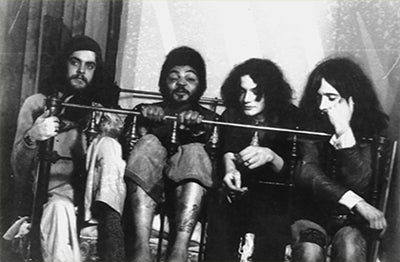
COUM: ca 1972.
ALTERNATIVE BIOGRAPHY:
But who was this ‘flower girl’ and where had she come from? Christine Carol Newby was born on 4 November 1951 in the Hedon Road Maternity Hospital in Hull, just before midnight. Tutti had al-ways hated the name Christine and preferred people to call her Carol. After meeting Genesis P-Orridge she changed her name again, first to Cosmosis, then to Cosey. The lengthening of the name to Cosey Fanni Tutti took place in 1973, when mail artist Robin Klassnik suggested it via a postcard. When Tutti joined COUM they were still a predominantly musically orientated group, playing instruments such as broken violins, prepared pianos, guitars, bongos, and talking drums. Tutti began to take part in performances in 1971, before then she would help build props and de-sign costumes. “I became more involved as the direction started to change,” Tutti told David Bour-goin, “COUM was musically based and took the form of acoustic improvisations, just anywhere, then more abstract scenarios started creeping in and we made entire environments for enjoyment.”
Simon Ford – WRECKERS OF CIVILISATION: THE STORY OF COUM TRANSMISSIONS AND THROBBING GRISTLE Published by Black Dog 1999
http://www.coseyfannitutti.com/content/biog.html
ART
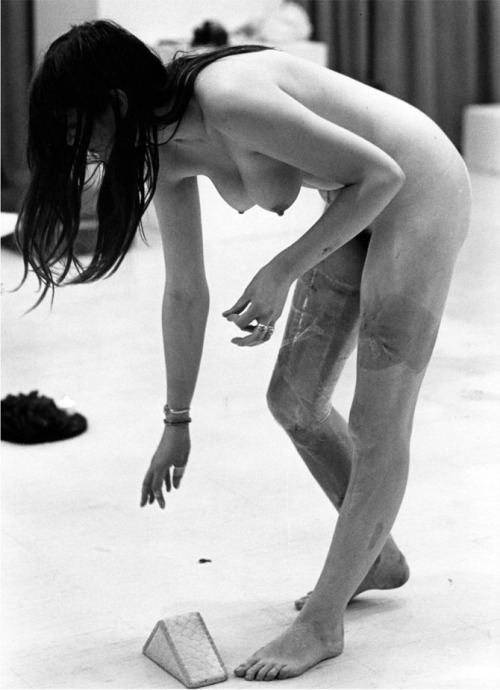

Studio Of Lust, Nuffield Gallery, Southampton, 1975


Woman’s Roll, 1976
THE FOLLOWING TEXT CONTAINS EDITED HIGHLIGHTS FROM THE COSEY FANNI TUTTI / TIME TO TELL INTERVIEW ON THE PUGZINE (Zine of the Underground):
I was brought up in a “working class” area of a large fishing port up North. My father was a fire fighter and my mother a wages clerk. I suppose they were professional people as opposed to “un-skilled” etc. The North of England is very nationalistic (The Wars of the Roses and all that). North versus South divide still persists today. Their attitude is so bigoted it’s frightening. Either way, the area was rough. Still I was the youngest of two daughters, never conformed and subsequently got “punished. ” My father was very strict. In the end he threw me out, and there began my journey into discovery. I’d obviously been pushing for it all along. I did well at school though, for some reason I was always a conscientious pupil. I loved school, people can’t understand that. It was the place I had most fun, but I knew it wouldn’t last; home wasn’t happy when my father was around, he was too severe and dominating to allow laughter to crack his face too often.
I realised at an early age that once you “grew up” all the freedom from responsibilities you had as a child would disappear, the freedom to “play” and act out fantasy situations in public is accepted in a child but not in adults. I made a conscious decision to delay the adult stage as long as possible. I knew there would be no way of recapturing my childhood. I fought a lot physically, it was that type of neighbourhood (still is). I can remember thinking as a teenager that I just didn’t fit in and I could-n’t get excited about boyfriends and engagement rings. The disco was a bore. Then I met someone who smoked dope and I met a whole set of people I could feel affinity with. I didn’t take dope for long, l saw my friends just sitting round condemning those who got drunk and did fuck all, and here they were smashed out of their skulls doing fuck all as well. It was another drug but the same ef-fect. I started drifting away from them then. It was all so clichéd and the “‘fitting in” syndrome domi-nated the so called “alternative” scene. I think kicking against all the conformity that dominated the city I was born in shaped my future activities. It turned out a lot of very creative people indeed. I hated being told what to be. I got into the “art performance/cum street theatre” after that and there we are. I was free to do what I wanted. Seriously, when your parents are out of the picture, it’s a load off your mind. That old fear of your parents finding out and having to answer for what you’ve done isn’t there any more. I hated upsetting my mother by what I did and that guilt was removed for me. That had a great effect on my feelings of freedom. It gave me a license to explore without hav-ing to justify my actions to any emotionally motivated authority.
http://www.coseyfannitutti.com/content/texts/pugzine.html
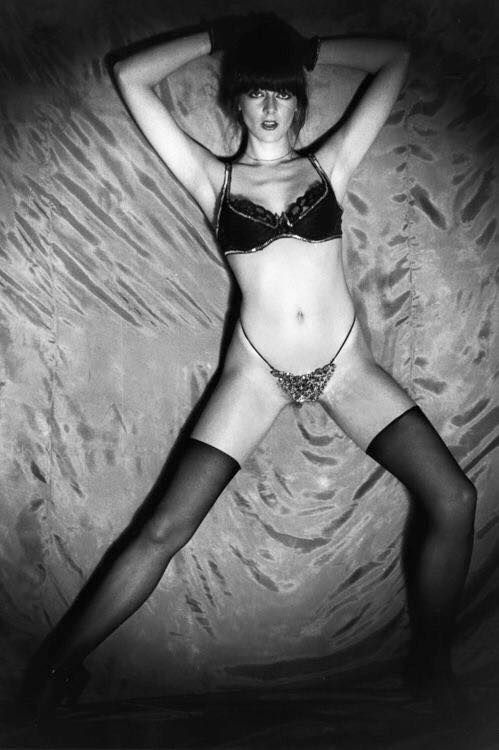
Dirt 3, December 1978
Interview with Cosey Fanni Tutti
DIRT. Since you’ve been a part of COUM, have you worked outside of it at all, in the way Sleazy does for Hipgnosis?
COSEY. Sleazy’s different because he had Hipgnosis before he met us and that is his living as an actual job. It’s all official and everything else. I’ve had very few jobs other than like I had two factory jobs and a secretarial job when we first came to London that have been completely separate. Eve-ry other thing I’ve done like modelling, dancing and stripping now, is all connected anyway, it’s all part of the whole thing.
DIRT. How’s it connected?
COSEY. Just in experience, just the fact that we were interested in things like that and it just seemed a bit naïve not to find out what it was actually like. We kept talking about something and making collages of things, just to start proclaiming this, that and the other. I think it’s hypocritical not to experience it. Like when I do the stripping now and when I did the films and the magazine work, I went out as a model and how they’d expect a model to be because to get the jobs that’s how you had to do it. When they found out about the ICA, I got black listed from every tit magazine, ’cause they realised I’d taken them for a ride. They actually all got round and said no more Cosey, right! I had to be how they expected a girl to be in all the different kinds of situations I was gonna get into, but then I had to take out of it what I actually wanted. But it was a really good thing to do, it taught me a lot about people, it really did, and how easy it is for them to fall into it and get absolute-ly destroyed. I mean even stripping now is really bad. You see the girls on the circuit, they get so wrapped up in the guys they see every day they forget that they’ve got their own lives to lead and the whole circuit becomes their life, which is terrible because when they go home after doing a booking they’ve got nothing, it’s really sad. It’s weird because a lot of the girls I’m working with, stripping and dancing, would never do photographic work and a lot of the girls I did modelling with would never do stripping or topless dancing, they’ve both got different sets of values you see and each side has fallen into it along a certain track. Therefore, it’s quite justified for them to be doing that, but to be suddenly switched over they couldn’t see it. For a start a lot of the strippers wouldn’t be able to model and a lot of the models wouldn’t want to strip, because it’s degrading, or only tarts or old bags do it. That’s how they look at it anyway. A lot of the models are no better anyway ’cause they screw to get jobs.
http://www.coseyfannitutti.com/content/texts/dirt.html
PROSTITUTION
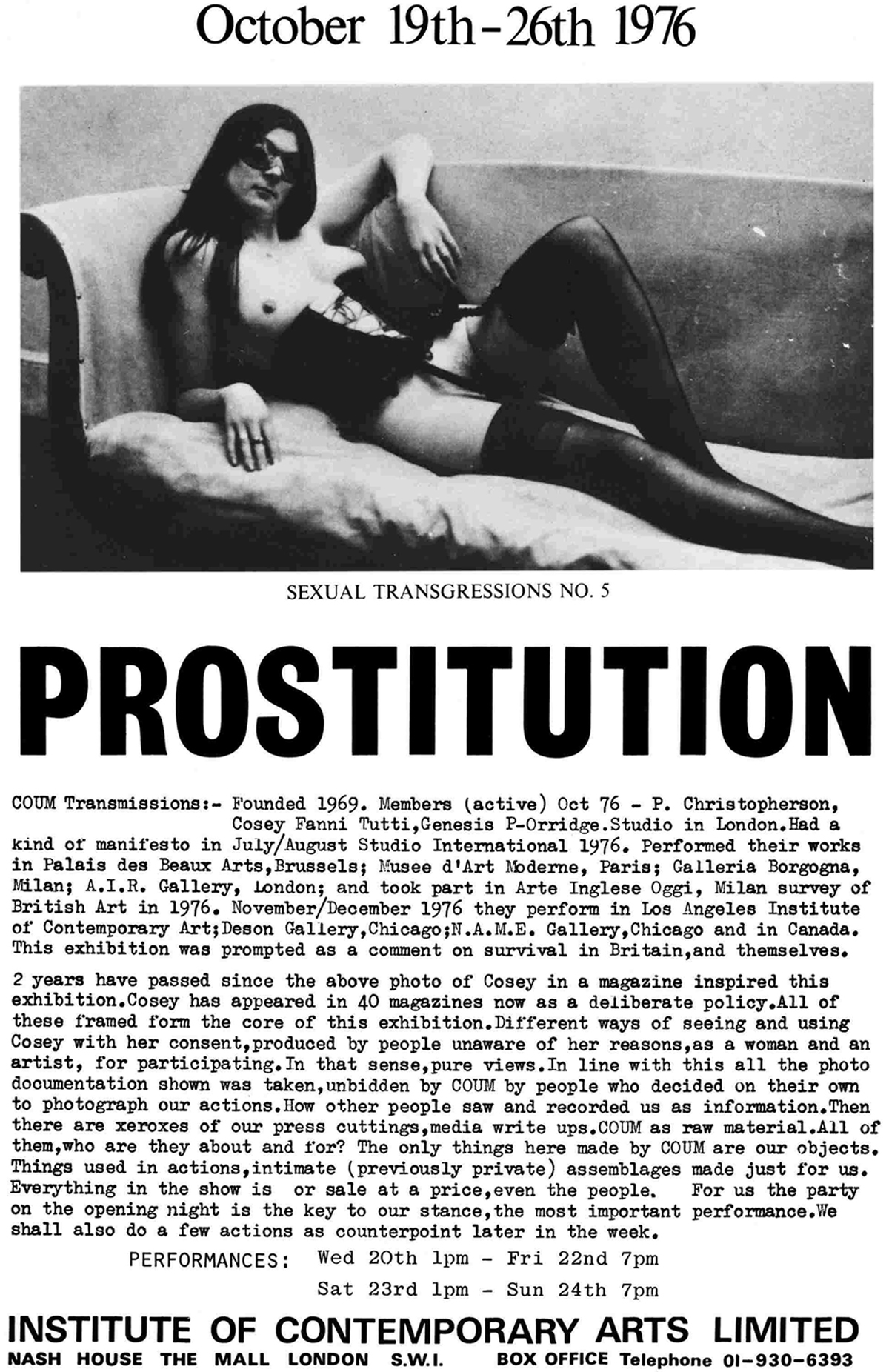
The COUM Prostitution show, in 1976 at the Institute of Contemporary Arts (ICA) in London in-cluded on display Tutti’s pornographic images from magazines as well as erotic nude photographs. The show featured a stripper, used Tampax in glass, and transvestite guards. Prostitutes, punks, and people in costumes were among those hired to mingle with the gallery audience. The show caused debate in Parliament about the public funding of such events. In the House of Commons, Scottish Conservative MP Sir Nicholas Fairbairn demanded an explanation from Arts Minister Har-old Lever and proclaimed P-Orridge and Tutti as “wreckers of civilisation”.[52] Fleet Street was not slow to pick up the story. The reviews were cut up, framed and put on display for the remainder of the exhibition. This was also reported in newspapers, so cut-ups about the cut-ups were also put on display.
Toward the end of COUM, performances would often consist of only P-Orridge, Cosey and Sleazy, the core group who went on to form Throbbing Gristle.
https://en.wikipedia.org/wiki/COUM_Transmissions#The_Prostitution_show:_1976

From the Guardian archive, 18 October 1976: Controversial art plunges in to the rusty hilt at the ICA
In one of the cases is a syringe with a bloodied bandage by its side, a jar of Vaseline, a used Tam-pax, a rusted knife, some wire, a bottle of blood, some chains and a large black wig.
“The knife and wire I use to garrott myself – almost but not quite – in my performances. The wig is just to wipe up the blood.” Mr Genesis P. Orridge (he changed his name by deed pull several years ago from Neil Andrew Megson) is describing the exhibition, entitled Prostitution, which his group, Coum Transmissions, is presenting at the Institute of Contemporary Arts from tonight.
Coum is a well-known “performance art” group. It has represented Britain at the Paris Biennale at the invitation of the British Council, and has been funded by the Arts Council.
Its new exhibition is on the theme of how the group is perceived by other people and how other people and the media distort it.
The exhibition, Mr P. Orridge says, is also about how the artist, and particularly the performance artist, has to sell himself and his works – which is why the group is selling the material they have used in earlier shows. “One is debasing oneself by selling.”
Why were they debasing themselves? “Because we wanted to and we needed the money. To sell yourself is somewhat debasing and everyone is selling something.”
Another section of the exhibition, also concerned with the selling and exploitation theme, shows photographs of another member of the group called Cosi (christened Comosis) posing for forty pornographic magazines over a three-year period.
“The photographers aren’t just creepy blokes doing it for kicks,” she says. “But the main thing was that I was doing it for reasons which they didn’t know about – for the exhibition.”
Mr P. Orridge thinks that another element in the exhibition is that it works satirically and in parody form. “A lot of the conceptualists and the prestige galleries are debasing themselves in presenta-tions which have little else to them but the presentation. Our exhibition is about presentation itself, so banal information objects are presented beautifully, and the object looks as if it’s important when it’s not.”
A rock group called Death Rock will be taking part at the opening. They will be singing songs about mass murder and about the child murderer Ian Brady. “They offer reflections on the way TV pro-grammes and the other media work,” Mr P. Orridge says.
The Arts Council, which in this financial year has given the ICA a grant of £90,000 for its exhibition, film and theatre centres, have had anxieties about the Prostitution exhibition.
The ICA’s arts centre director, Mr Ted Little, was called to the Council and interviewed last week. “They said that our grant situation would be reviewed in the light of the show,” he said yesterday. “Their attitude is totally unjustified – to talk of our grant being jeopardised for eight days’ work. The ICA’s policy is to present new and innovative work of British artists. I never say what the quality is like. The public must pass comment.”
He thought that the ICA was the least funded of all British art centres. While its grant was £90,000, its annual turnover was £330,000.
https://www.theguardian.com/music/2014/oct/18/genesis-p-orridge-ica-exhibition-1976

Original screenprinted full colour poster for the ‘Prostitution’ retrospective held at the Institute of Contemporary Arts, London, 1976.
The ‘PROSTITUTION’ exhibition at the ICA was a retrospective show of the work of Coum includ-ing the ‘girlie’ magazines Cosey had appeared in as well as ‘objects used in Coum performances.
The show as a whole was a representation of how Coum, Genesis and Cosey had been perceived by various forms of the media, from the tabloids to fine art analysis and interpretation of Coum’s work. Ironic when the press response proved so great that it became part of the exhibition day by day, echoing the sentiments on all levels, of the work already on show. Daily press cuttings about press cuttings. The irony and humour of this was never even realised by the press in their frenzy for gossip to fill their front pages. Questions were asked in the Houses of Parliament, Arts Council grants came under scrutiny because Coum had been funded for shows abroad, to represent Britain in major exhibitions. Indeed Coum were to perform in the U.S.A. and Canada immediately after the ICA exhibition, but were refused entry to Canada on the grounds that they were considered ‘unde-sirable’. All this press coverage instigated by Coum, turned to the exploits of Throbbing Gristle. A wonderful promotional ploy could never have been planned to work so well.
The opening night of the ‘PROSTITUTION’ show was to be least like an ‘art’ opening as possible. The band L.S.D. played live they later became known as Generation X. Cherry, a stripper was booked to perform after TG had appeared. which she duly did, writhing in the fake blood left on the floor after TG’s show. Throbbing Gristle performed their first official gig to a mixed audience of art critics, punks, politicians, musicians and artists. That evening like many TG gigs was marred by violence. All the press attention acquired unwittingly by TG was a bonus for the launch for their project. During this explosive time, Punk arrived on the scene via the marketing skills of two clothes shops down the Kings Road, owned by associates of members of TG. BOY boutique was fronted by ‘Generation X’ and SEDITIONARIES fronted by ‘The Sex Pistols’. Punk and Industrial music initially ran parallel to one another, often becoming confused until definitions became clear-er.
Cosey Fanni Tutti 1990
http://userpages.umbc.edu/~vijay/TG/texts/text4.html
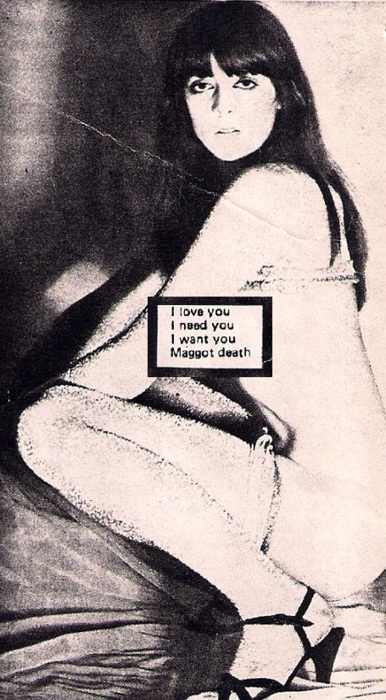
Throbbing Gristle / Chelsea – ICA
“But darling, mutilation is so passe . . .”
“IT’S A SICKENING OUTRAGE! Sadistic! Obscene! Evil! The Arts Council must be scrapped after this!” So spoke Tory MP Nicholas Fairbairn of this gig. The Daily Mirror enjoyed it, too: “Porn-pop art show! Distasteful and unartistic! Hare-brained schemes of a few trendy elitists!” That’s from the Mirror Comment, and the outraged Tory MP quote is from the national press.
Fairbairn also wants an explanation from Arts Minister Harold Lever in the House of Commons to tell the rulers of our fair land just how the Institute of Contemporary Arts, with its grant of £80,000 a year, was permitted to put on a show of such decadence that the whole of our pious national press were up in arms . . .
Betcha dying to know what happened, ain’tcha? Okay, here’s what . . .
Some pornographic, photographs stuck on the wall , a few used tampax in glass cases, a great stripper and a lot of music is the gist of it. Seems like everybody in the audience was an artist, a painter, an actor or a writer. “Oh, daaah-ling how are you?” was the battle cry around the makeshift bar. Still, the drinks were cheap and the conversation was amusing and by the time a party load of kids decked out in latest punk fashion wear arrived, closely followed by the national press, things were starting to warm up.
Throbbing Gristle, music from the Death Factory, were the first band to appear. The lead singer and bass player, Genesis P. Orridge, had ratty shoulder length hair that was shaved bald up the middle of his head, as if he had been run over by a crazed lawnmower. While he went into a rap about the decay of humanity Peter Christopherson took his place behind his tape machine, Chris Carter got behind his keyboards and Cosey Fanni Tutti settled himself on a wooden chair to handle lead guitar.
After Genesis finished his opening speech of doom and destruction the band went into their, uh, music which consisted of lots of weird sub-psychedelic taped sounds rolling around random key-boards played plonk-plonk style, lead guitar that Patti Smith would have been ashamed of and mo-ronic bass on a superb Rickenbacker by old Genesis P. Orridge himself.
I went to get a screwdriver from the bar and came back just in time to see the band start mutilating itself. Genesis seemed to be really enjoying himself but most of the audience were bored. “Oh, daaaaaaahling! So passe! Nigel said at the party it would be interesting and artistically fulfilling!”
Backstage Genesis talked about his obscenity bust over a bottle of Scotch and told me he was soon off to the States to see his hero and main influence – William Burroughs.
“He’s living in an old people’s home now,” Genesis said. He’s had contact with us for a long time now … the obscenity charge was because we want to give the people information … we want to stop the decay of civilisation through our music.”
Leaving Genesis backstage with his bloody face, his shaved head and his-plans to save the cos-mos I went back to the audience to check out why so many kids decked out in punk outfits had come along to the ICA tonight. Surely they weren’t interested in all this, uh, culture?
“NAH, MATE,” one of them told me while adjusting the safety pin in his carefully ripped tee-shirt. “We’ve come to see Chelsea. They’re on after the stripper.”
But LSD are on after the stripper.
“Yeah, they’re billed as LSD but their real name’s Chelsea. Got a great guitarist, they have. Good as Wilko, he is.”
Alright, thanks squire. Shelley the stripper comes on decked out in full Cherry Bomb outfit and she
is GREAT! While looking a few years older than the fourteen summers that the MC had announced (ah, if only that were true) she is a true artiste and takes about four records to slowly get out of her ensemble. She really stretches it out. The crowd love her.
Chelsea come on and by the end of their first number it’s evident that they’re coming from the same direction as the Pistols, Damned and the Clash, but at the moment their act suffers from the problem of the band not having played enough live gigs together.
But what the four of them lack in polish they more than make up for in committed energy. They’re aggressive, but through their music, not their actions. Meaning that they want attention from the audience but they want it because of their music and not because they’re spitting over the people in the front rows. A good set of 1977 dole queue rock, only two of the numbers not written by the band.
They’re all from the London area, Billy the bass player tells me after the gig: “We’ve known the Pistols for years, we could be that big if they gave us a chance. We’ve been turning up at venues with our gear and asking them if we can get up on stage and play but most of them tell us to piss off.
“We’ve been rehearsing in an office. There’s a lot of people like that bird you just mentioned who are trying to ride on the bandwagon of all the kids that are playing in high energy bands at the mo-ment. We want to play music we believe in, we don’t want no thirty year-old manager telling us what to do.”
That’s Chelsea. You’ll be hearing that name again. Okay, promoters – book ’em.
Tony Parsons, NME, 30 October 1976
http://www.brainwashed.com/tg/live/ica.htm
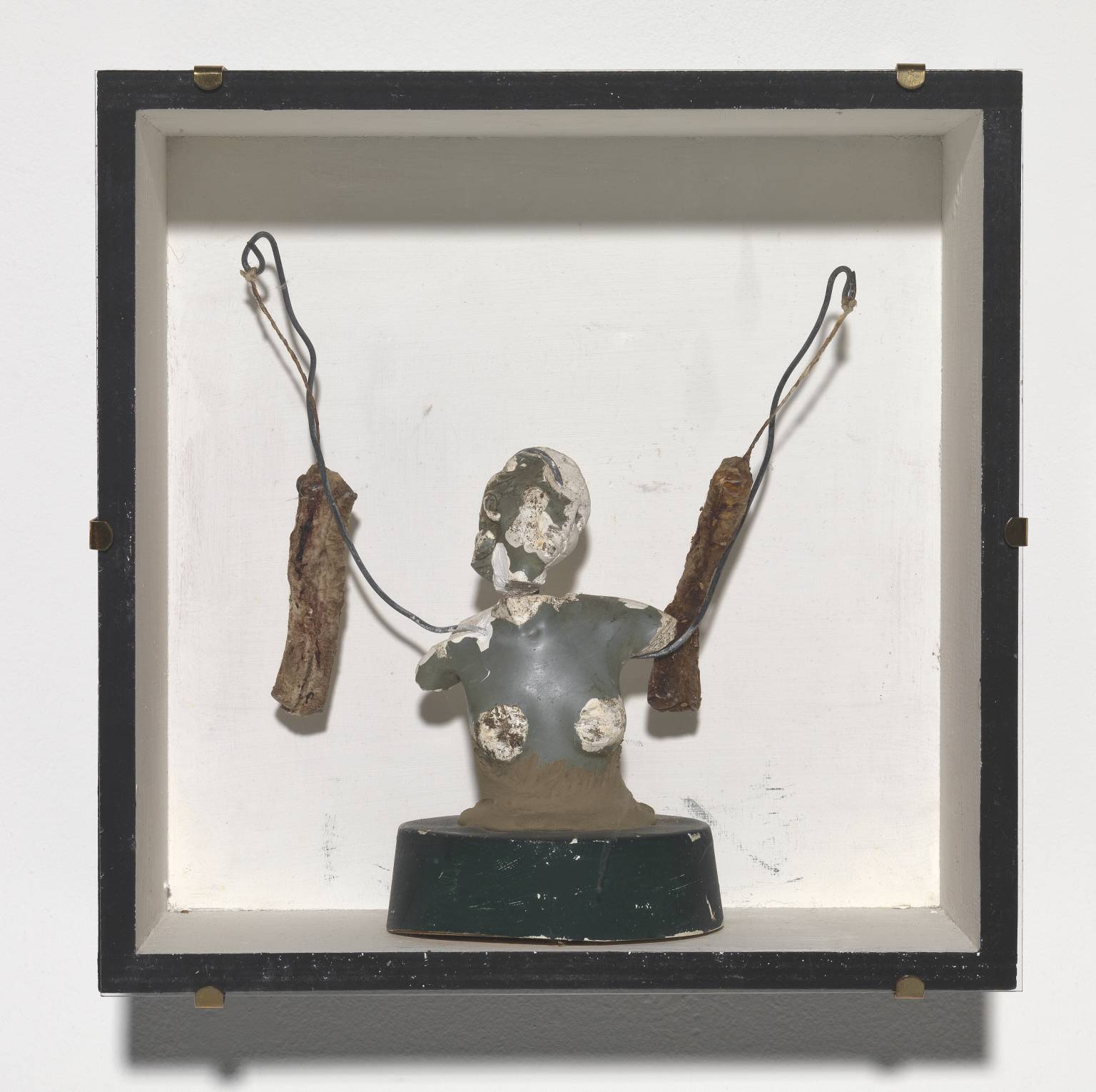
Genesis P-Orridge ‘Venus Mound (from Tampax Romana)’, 1976
SEX

Fiesta V.10 No.6 Cover
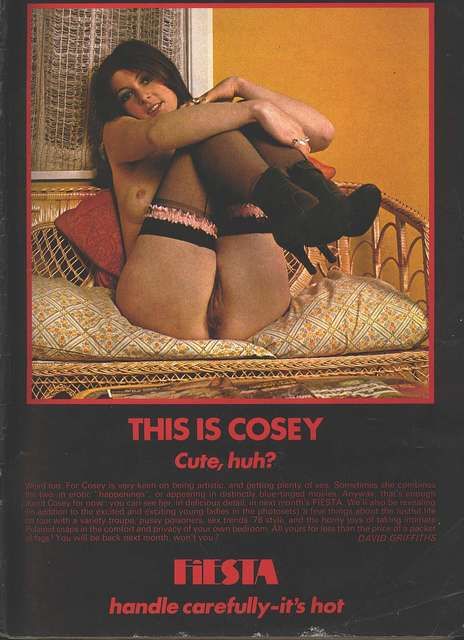
Fiesta V.10 No 6 Next Issue Preview

Fiesta Vol.10 No.7 Pictorial p2
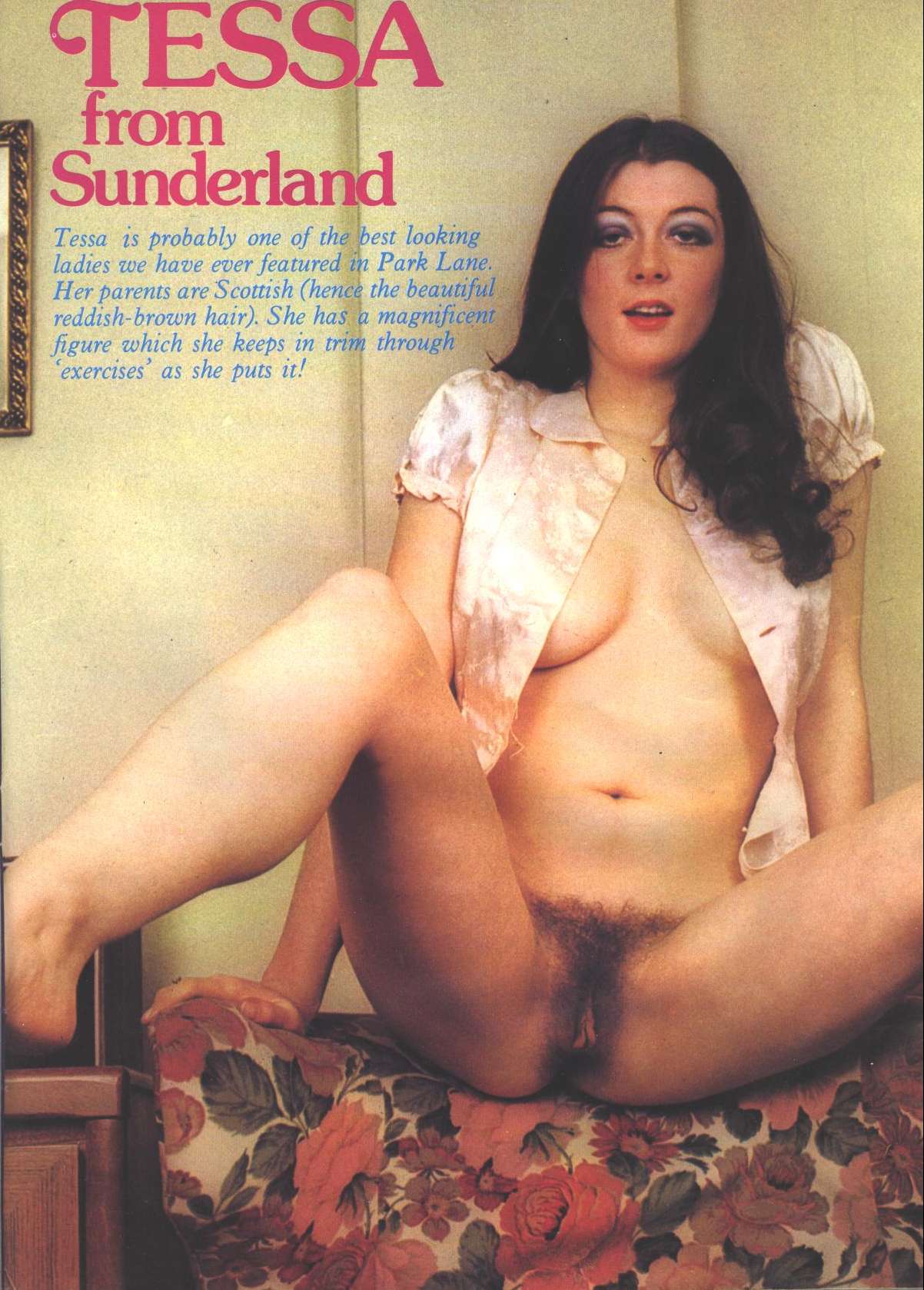
Park Lane No.12 Pictorial p1
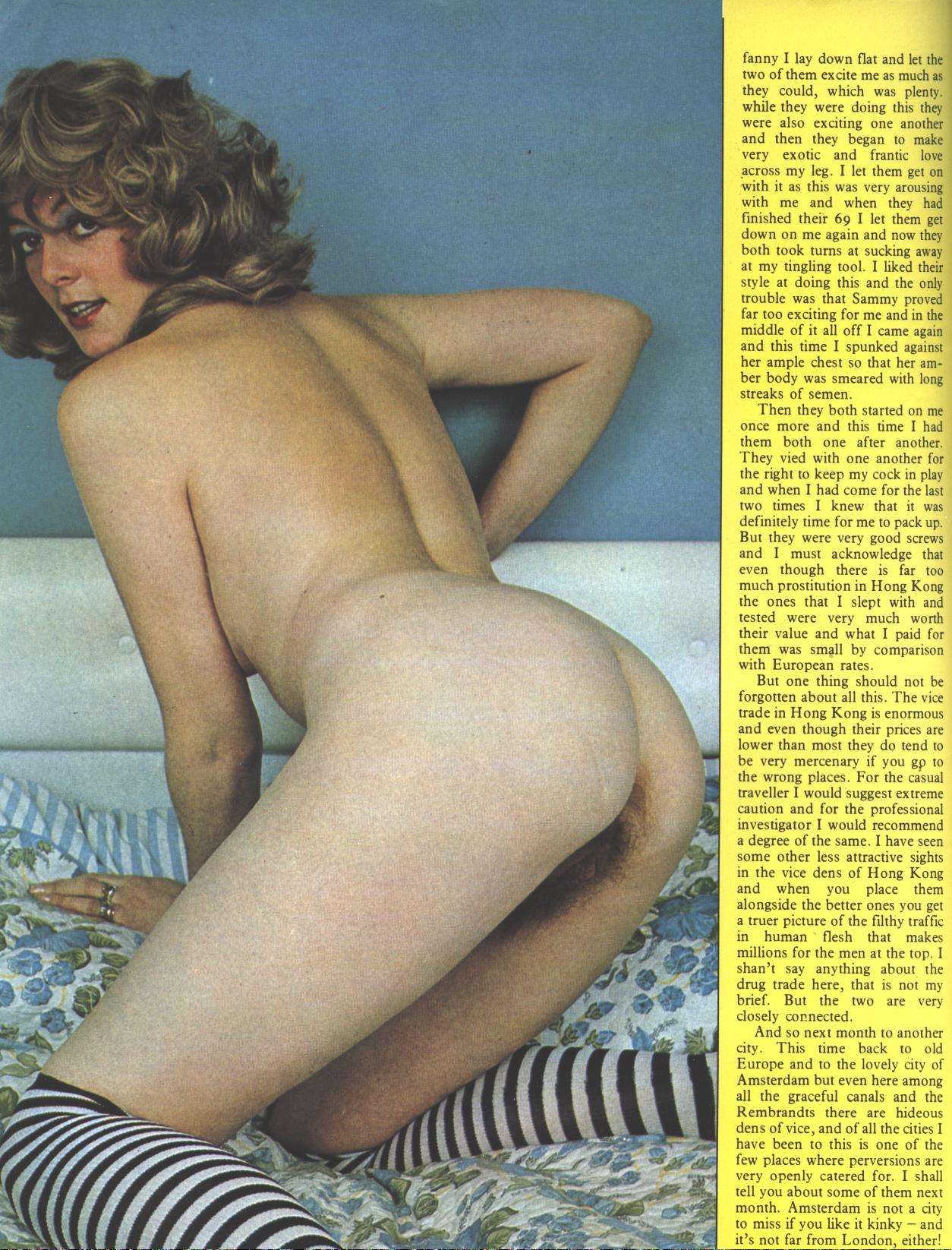
Playbirds Vol 1 No 5 Pictorial p1
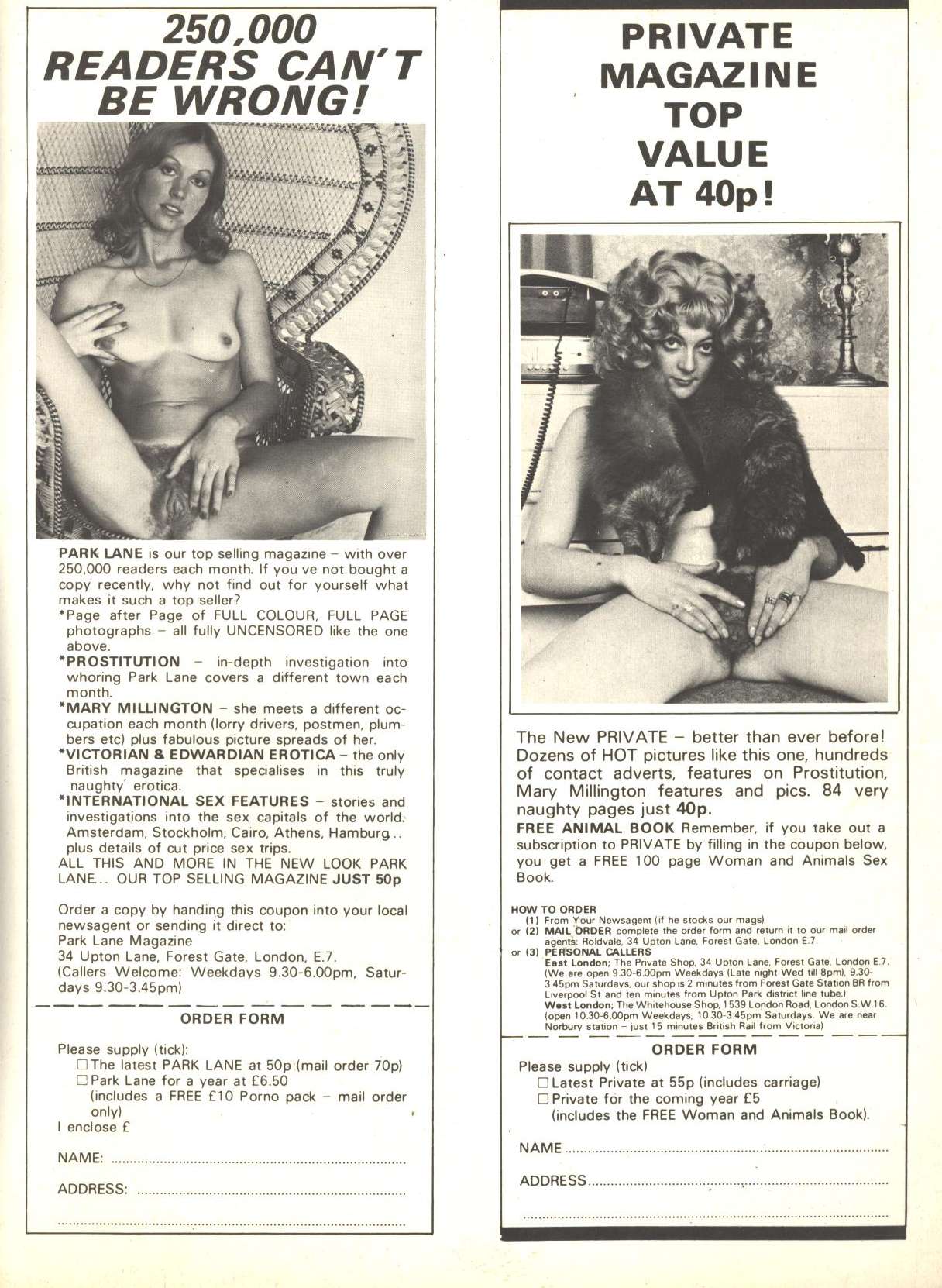
Playbirds Vol 1 No 5 06

Whitehouse 20
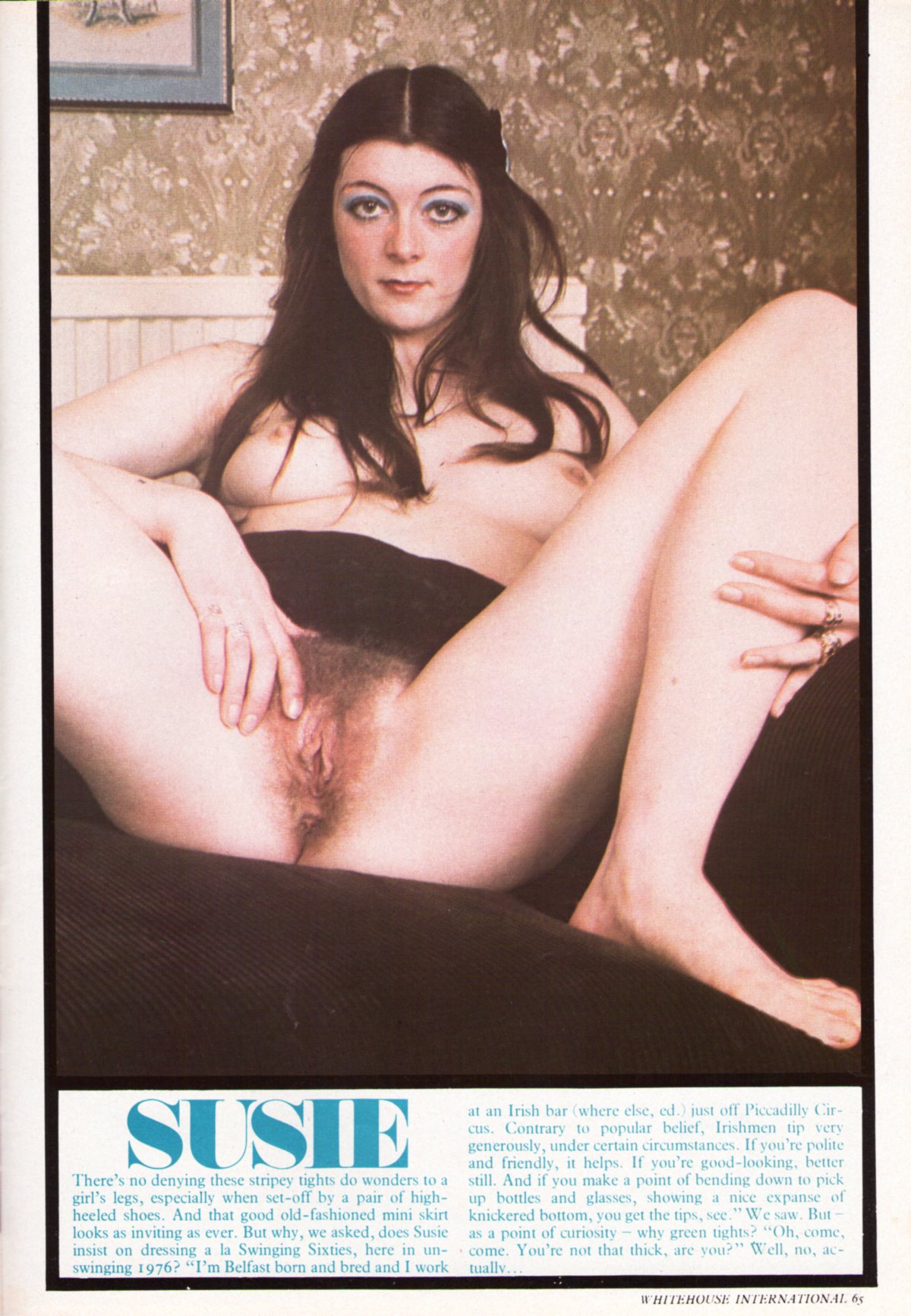
Whitehouse 21
What follows is Cosey’s response to the Compulsion online questions derived and pertaining to Time To Tell and specific to her experience in the sex industry. Special thanks to Cosey Fanni Tutti for taking the time.
i) When and how did you get involved in modelling / stripping? Did you initially do it for money, art or personal reasons? At the time did you have any preconceptions, fears or prior knowledge of the sex industry?
I got involved with modelling for sex magazines first because of my fascination with the sex indus-try and the images in the mags which I was using for collage material in my mail art. It seemed my collages would be more ‘complete’ and honest if the images included me in the real sex situation I was pillaging for my own art. From then on that whole art is life/life is art took a real hold because it was a different world to the art scene we were part of at the time. So I guess the reasons I entered the sex industry was for both art and personal reasons. To be perfectly honest I didn’t consider the money aspect. My interest was purely in the ‘doing’ experience of it all. I had contact (through my mail art) with a girl in London who was already a model for sex mags and films. We nick-named her Nanny Rigby as she’d previously been a nanny. I got my contacts through her when we moved to Martello Street in Hackney.
I had no real preconceptions of what it would be like other than seedy because that was the preva-lent notion of the sex industry at the time. Nanny gave me advice as to what to expect, accept and reject. Then I forged my way through the various scenes within the underground/overground sex world. I never had any fears as such, just the nervousness everyone gets when they start a new job. I was just so excited about getting the first mag with me in.
It took so long that by then I’d moved on from mail art to performance art so the initial motivation had been displaced by events. But that was fine because it didn’t feel wrong. I was happy for the sex work and art to cross over as and how it did.
I had a very different introduction to striptease. Inevitable really when I put together the links of the chain involved. I had met a couple when doing magazine and soft core work. She also did strip-tease and we talked about it, I went to see her act and got interested in the very different world of stripping. Later I met Lynn and her boyfriend who wrote for Forum and their own books. Lynn did striptease in pubs as opposed to stag nights. I saw another side to stripping that also appealed to me so I auditioned for the Gemini stripping agency. That was nerve racking! I had to do two topless dances on the stage of the Chelsea Drug Store in the Kings Road. Anyway I got the job. This was 1977 as I remember, post ICA.
ii) In the Time To Tell booklet you mention that stripping was the most satisfying, as striptease fea-tured your own personality and allowed a degree of artistic freedom. Which out of – modelling, strip-tease, topless dancing, porn films, stag nights – was the least satisfying, and why? Which was the most exploitative for the female and for the male punter?
Without a doubt the least satisfying was the stag nights. I think you need to be in the position of the stripper to appreciate fully what it is to be the focus of such baseness. On occasions even the DJs, compares and comedians derided the girls. The worst were the police stag night gigs. In fact most of the girls would try and avoid doing them. I would say stag nights were dangerous even if we never openly said that to one another, it was an unwritten code that we never left one another alone at any time and we left the venue together. I have remained in the room while the other girl/s provided ‘extra services’ and maintained some sort of order as the men wait their turn. Such are the scenes behind the scene.
I was lucky that I’d done soft and hard core films because it was a safer environment in which to take of the experiences that I did. There’s a difference between being paid to have sex for a film and between the sex for sale involved in the stripping world which was more like prostitution. Your choices and options are limited to the demands of the ‘client’. In the film and magazine work I learnt how to do what I wanted, even if it was from a previous bad experience. I wasn’t forced to repeat it. That brings me neatly to your next question.
The issue of exploitation in the sex industry over all would take me forever to discuss properly be-cause I think it’s very complex. When I was working it was women who were the most exploited, but things have changed somewhat since then. I absolutely detest the word ‘punter’. I can’t tell you. It makes me gnash my teeth. It’s so unreasonably derogatory.
iii) Knowing it was a personal investigation, did that provide a barrier so that you could say no, or at least suggest alternative options, whereas other girls who worked solely for the money perhaps found it harder to say no and under the circumstances were more accepting? How did it make you feel seeing girls being coerced into acts or working with girls that seemed to lack any self worth? How did you deal with that? Was there a sense of camaraderie between the girls?
I obviously had a different attitude and approach to the stripping and modelling than the other girls. That was bound to be because I went into it with a defined and very different agenda to them. I can’t think of any one girl who wasn’t motivated by the money first and foremost. Admittedly as time went on they got dependent on the attention too. I think the girls who worked solely for the money were more accepting and some had a very practical attitude to what they had to do. Maggie would say she never paid any bills that could be paid in kind, even the fitted wardrobes in her bed-room. When one of the girls got her house safe robbed, she referred to the loss in terms of the number of blow jobs it represented, and how she’d have to do them all again.
I thought that epitomised the difference between me and her as strippers. There were about 6 hard core girls with my stripping agency and each of them would request that I be the second girl for a stag night purely because I never did hard core with the guys, only lesbian acts with the other stripper. That way they could earn BIG money and they could take centre stage as the blue act. In the end I got request bookings for stag nights on the grounds that they wanted a ‘class’ act. How ironic is that? To refuse to play the game gains you status (of some kind) with both the guys and girls. So yeah, I suppose my motive for being there gave me options that paid off.
There was great camaraderie between the girls in stripping and modelling. I guess it stemmed from an unconscious feeling of vulnerability and willing yet unwilling subordination. If you stick together you don’t feel quite so bad about doing something that not only doesn’t feel right but also fuels the fantasy of someone you wouldn’t normally give the time of day. But we all talked about it and had a great laugh at the guys expense sometimes. Is that bad too? It was another defence mechanism.
There was an instance during a stag night when a girl really didn’t want to do any extra sex ser-vices. She was almost crying. There were 4 girls there including myself and the other 2 girls were writing up a ‘shopping list’ of who would give what to which guys. I just told her she could actually make the decision to say no, she had a choice like me. She refused and never did it again. In fact we would work together and do lesbian acts instead. A similar situation arose during a couple of hard core films actually. It’s weird watching it all because I empathise with the girl yet I see the film director coercing her, her looking around for support or help. In those situations I and some girls would work out a compromise as to what we wanted to to to and with each other or the guys and present it in such a way that the director was happy to swap his request for what we wanted to do.
I have worked with girls (and a transexual) who had no self worth at all. It becomes a self preserva-tion situation at times because their attitude can be falsely taken as yours too, so I would often distance myself from them. In some of the London pubs it was really dangerous for girls like that because there were guys who would (and did) take full advantage. Some girls you could approach and steer them away from such destructive actions and we always tried. It was accepted that we all had trouble dealing with what we did and we supported one another in different ways. Them against us, even us against our own agency and some of the other girls too.
It was a strange thing coming home to someone after all that has happened and they don’t have a clue about what you have had to do to survive. The drives home late at night helped me assimilate things but the cocoon of ‘home’was so welcome at times as was the fact that it was totally sepa-rate. I was lucky I had that, some of the girls didn’t. They worked 7 days and 7 nights a week.
iv) I understand you ceased your activities in the sex industry in 1984, after ten years or so. That’s a long time. When did it cease to be an investigation and actually become enjoyable? Why did you decide to stop? What did your explorations in the sex industry teach you about yourself?
I decided to stop because I had my son in 1982 and we had moved out of London to give him a childhood in the country. Besides those personal and practical reasons, there was my music and art. People at the pubs and stag nights began recognising me and booking me as ‘Cosey’ (I was called Scarlet). For different reasons it began to feel uncomfortable.
At that time I was a three way personality, Cosey Fanni Tutti, Scarlet and mother. The time had come when I needed to be just Cosey and whatever that represented. I had exhausted the initial reason for entering the sex industry and I asked myself why I was continuing. If it was the money only then it was time to leave before I got totally dependent on it. I needed to refocus my energies on personal relationships, my music and art. Also I felt uneasy about my dear innocent child and how what I had done would affect him as an adult male. This came from my knowledge of some men’s attitude to women who stripped or modelled for mags and films. Or maybe from a feeling that I was contaminating someone precious to me. Psychoanalyse that one! It’s the reason I stopped stripping as soon as I knew I was pregnant.
I’m still trying to figure out what I learnt about myself from all my exploits. I learnt something really obvious but something I think we tend to overlook. That is, to please someone else is not always the right thing for myself and when I do something that I feel uncomfortable with it can be a valua-ble experience in terms of it being an acknowledgement that the uncomfortable feeling was justi-fied or not. It’s when you repeat it knowing it isn’t right that the damage is done.
I learnt that I was in control of my sexuality and of the power of being a woman. I chose to enter the sex industry with my own agenda and to explore its reality. That entailed submitting, but not necessarily repetitiously, to what went on. How could I have got as near to the actual experience without being the stereotype ‘model’ or ‘stripper’? Being Scarlet was a challenge and experience in itself that taught me so much about the sexual rapport between men and women and women and women. It’s made me a stronger and more confident person. It’s taught me social skills I would never have acquired had I not done it.
v) Your experience within the sex industry was the cornerstone of the Coum Transmissions exhibi-tion, Prostitution. The magazines featuring yourself were sealed in containers and could only be viewed one at a time and by request. Did you feel that such a presentation diluted the impact of the overall piece? Did the furore surrounding Prostitution overshadow the purpose of the exhibition? I believe you are working on a retrospective exhibition, Select Reflection, any news?
I think by default, that the enforced boxed presentation actually enhanced the overall project in some respects. It placed the mags back in their worldly ‘top shelf’ situation and said so much about how the sex industry was regarded at the time. That is, something best not discussed, pushed out of sight. But it was bad in so much as the works weren’t seen as ‘artworks’ and therefore not readi-ly accessible to those who wouldn’t find it easy to ask for access.
The furore added and detracted from the purpose of the exhibition. It was itself a retrospective that had the adverse effect of relaunching COUM in a way. The hysteria rode rough shod over the pur-pose of the show. It wasn’t sensationalist in intent. It was just a presentation of our work and a comment on the artworld and society’s attitude to our bodies, sex and what is acceptable as art, performance. The underlying prostitution.
Select Reflection is ongoing basically because it requires my reflecting and making sense of what I’ve done, who I’ve been and where and who I am now. I don’t know yet! Thank goodness, that would be sooo boring.
vi) What reaction did you get from your fellow Coum Transmission members/ Throbbing Gristle members when you decided to investigate the sex industry? Was it difficult to maintain a separa-tion between the art world and sex world? It’s quite strange that you crossed over from the art world to the sex industry which is the reverse from what others such as Annie Sprinkle, Annabel Chong have done. It must have been quite seedy then what’s your impression of the sex industry today?
I was modelling before TG was formed. At various times and by different people I was asked to stop, after their initial fascination had worn off. I refused because I didn’t feel that I had fulfilled my potential with the project at that time. It had to be my decision to pull out the same as it was to en-ter. I never consciously tried to keep the art and sex world separate. They merged into one really.
What I’ve seen of Annie Sprinkle’s work I’ve really liked because of her warmth and directness.I never knew she came from the sex industry into art. That would explain why I found her work so ‘unarty’ and unpretentious. And apprenticeship in the artworld does tend to result in cold preten-tiousness whereas the sex industry demands some degree of warmth and openess.
The sex industry then was very seedy in some areas. I dare say it still is now but I think it has changed enormously. Now women choose it as their career. It’s more open now. I wouldn’t say it’s less dangerous though. In fact I’d say it was dangerous to assume it’s safe. And I mean safe in all meanings of the word.
http://www.compulsiononline.com/falbum2.htm
MUSIC
TIME TO TELL
Notes
“On the 19th of May this year Cosey Fanni Tutti gave a lecture to the fine art students of Leeds Polythecnic [sic]. This lecture and the question/answer period that followed are reproduced here as the basis for this special issue of Flowmotion attempting to, within our space limitations, give as thorough and clear a picture as possible of Coseys [sic] work over the last ten years as a perfor-mance artist with Coum Transmissions (including her striptease and modelling [sic] work), and as a musician with Throbbing Gristle and C.T.I.
For Szabo”
A one-sided C60 with a newspaper magazine featuring articles, readings and interviews on Cosey Fanni Tutti, Throbbing Gristle and CTI.
Tracks are mixed together.
Special thanks to Joe Piecuch, Dave Byatt, Chris & Cosey.
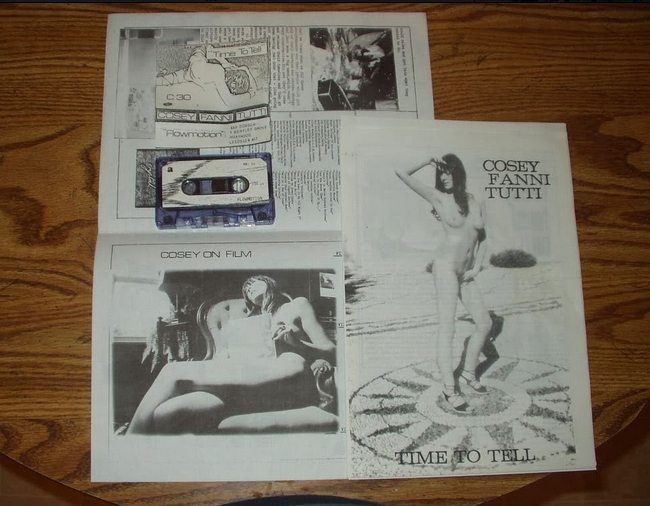
A Special release on the Flowmotion label.
A one-sided C60 with a newspaper magazine featuring articles, readings and interviews on Cosey Fanni Tutti, Throbbing Gristle and CTI.
Cosey’s first solo release, a foray into early dark ambient territory,with sultry spoken word passag-es.Good for flotation tank dwellers.
And as normal with Industrial genre releases, there’s plenty of multi-media content to enter-tain.Especially lovely is the full length shot of the Industrial Queen herself, bedecked only in a pair of wedgey sandals.
This is far more wholesome soft-porn than the relentless Sexual Propaganda we see today from the likes of Miley Cyrus and Rihanna; or should I say the shape-shifting reptilian hybrid psycho-paths behind them. Brain washing our children to be lazy sex obsessed obese morons directly at-tached to a Sony PS3 or X-Box by the cerebral cortex.
The soft porn here is more likely a statement of these facts,and also that a woman can retain her sensuality and be clever?
It also doesn’t harm the sales figures either,but hopefully that is a byproduct.
Basically it satirizes the exploitation of both men and women by the media.
Jonny Zchivago
http://dieordiy2.blogspot.co.uk/2014/01/cosey-fanni-tutti-time-to-tell.html
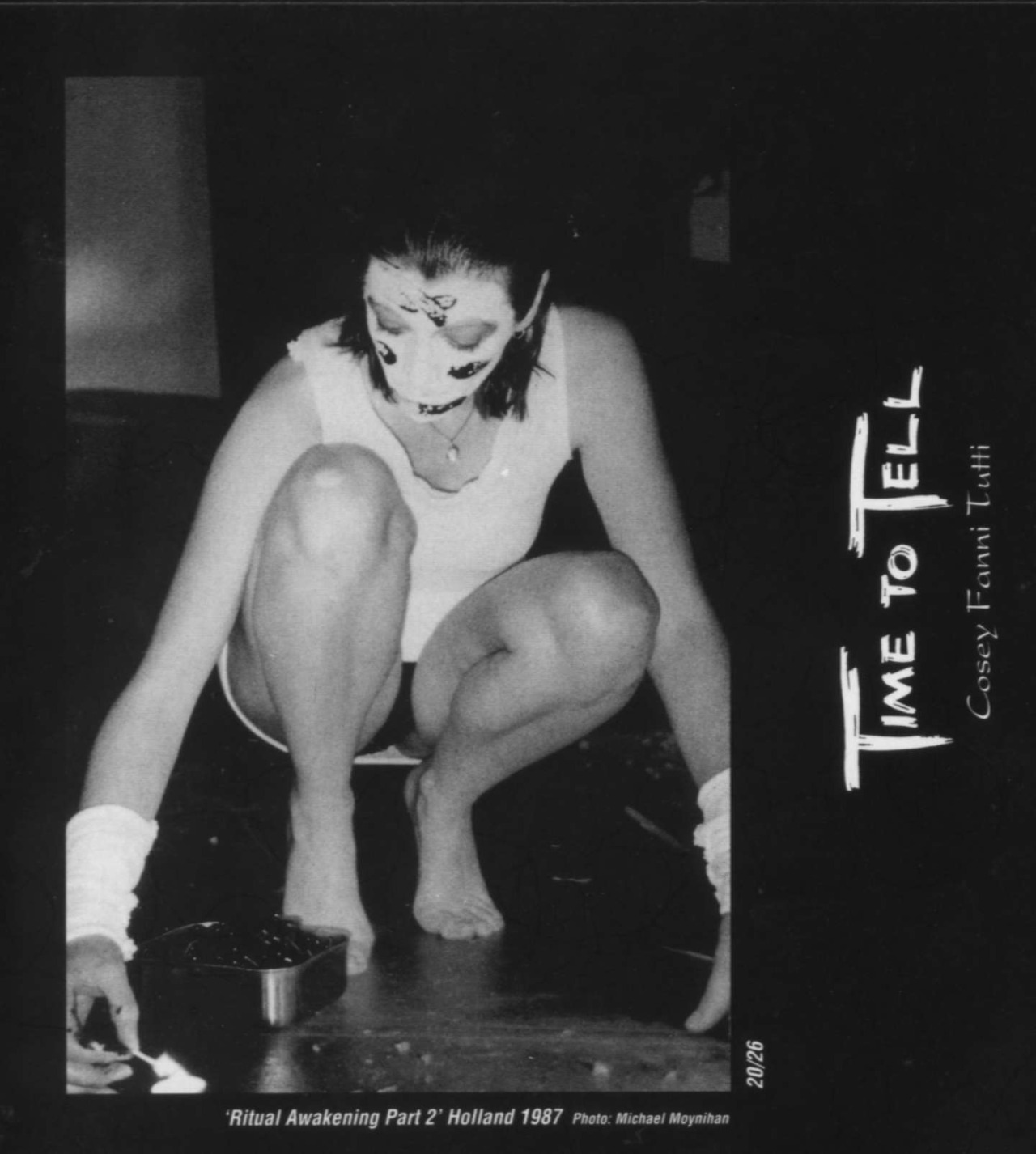
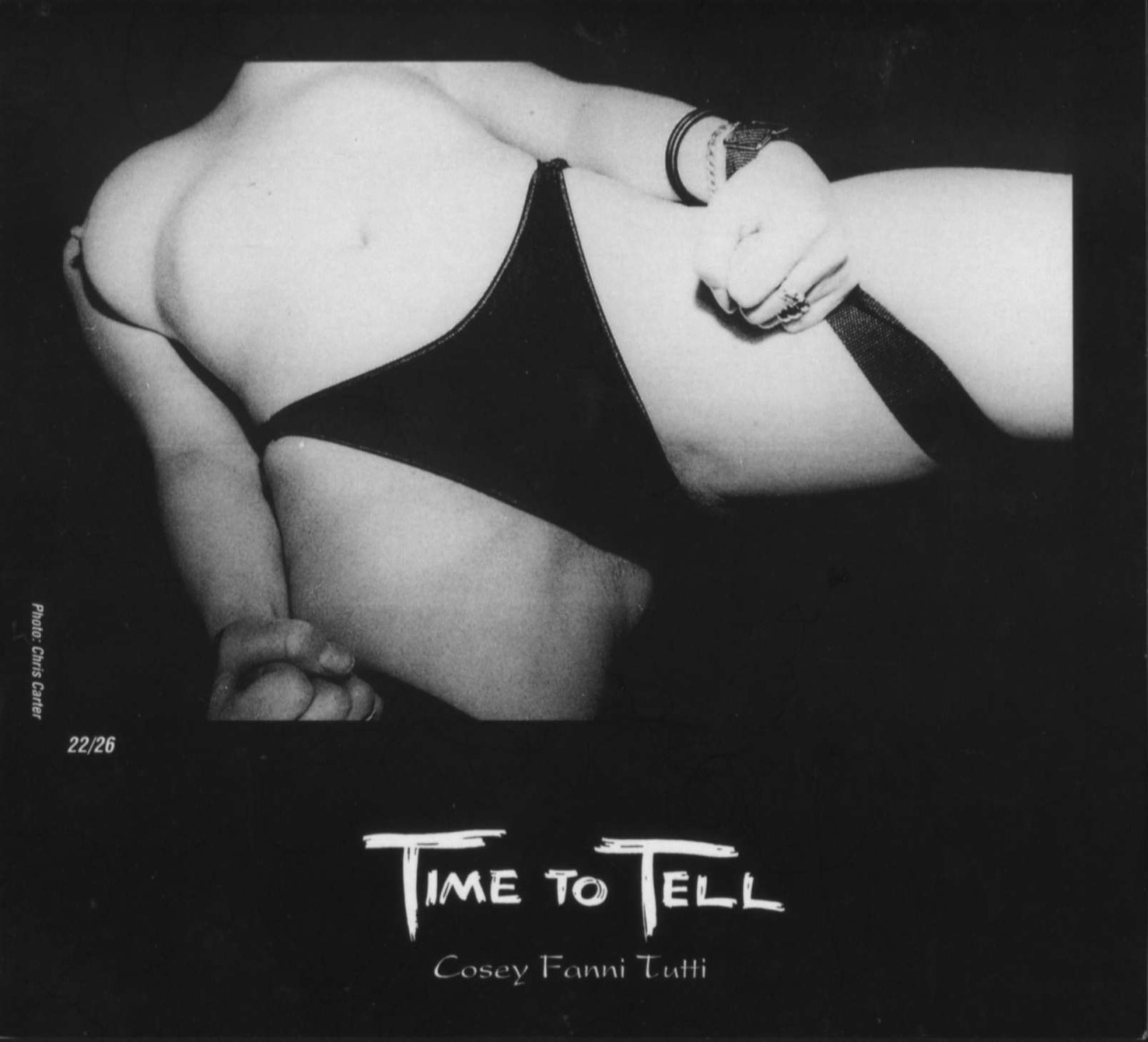
In the 1983 cassette Time to Tell (later rereleased)– a work that Cosey Fanni Tutti used to explore the way the various facets of her life as a model, performance artist and stripper fitted together – the artist layers dreamy vocals, spoken in her soft Yorkshire accent with a slow and steady rhyth-mic delivery over ambient, industrial electronica. Although she has said of her work that the lyrics or even the chords or choruses are not important to her –“certain sounds just hit you in the gut and those are the emotions I’m interested in when I’m making music,” she told the Red Bull Music Academy in 2010 – the words she speaks on Time to Tell are an exercise in self reflection, and include thoughts on how her clothes and actions helped shape her myriad personas. “Working as a topless dancer and striptease artist – this is eroticism presented live and spontaneously,” she says. “It is not choreographed. There is communication taking place in a visual sense; facial expressions, physical gestures and the mood of the music. Projection of one’s personality is the key to success, unlike that of a nude model. Costumes and movement and the music create the atmosphere for the ten minutes one is in focus.” She adds: “However, you are still who the viewer wants to perceive you as.”
Laura Havlin
http://www.notey.com/@anothermag_unofficial/external/5315702/cosey-fanni-tutti-agent-provocateur.html
Throbbing Gristle
Cosey on Throbbing Gristle – 20 Jazz Funk Greats @ RBMA
The first real industrial group, the founders of Industrial Records and one of the most important electronic music innovators of all time. Growing out of the extreme performance art group COUM Transmissions, TG redefined music and laid a large part of the groundwork for all electronic music that followed.
From their first performances in 1976 to their last gig in San Francisco in 1981 (recorded and re-leased as “Mission Of Dead Souls”), they challenged and threatend so-called “normal”, society – denounced from the floor of the House of Commons as “Wreckers of Civilisation” as the Coum Transmissions “Prostitution” art show in London’s ICA (at which TG played their third show) came close to causing riots and set the stage for the punk revolution.
Musically, they were extreme and uncompromising, using technology to make anti-music, which redefined music for all time. Their experimentation led them to pioneer sampling and looping tech-niques adopted by many of those who came after.
Throbbing Gristle officially began at September 3, 1975 and they officially split on June 23, 1981. After they split, Genesis and Peter formed Psychic TV (and Peter later joining Coil) and Chris and Cosey becoming, well, Chris & Cosey. However, they came back together 23 years later in 2004 to plan an ill-fated weekend festival, which became a one-off recording session in London when the festival fell through, releasing a limited TGNOW album of the recordings.
https://www.discogs.com/artist/12589-Throbbing-Gristle
Chris & Cosey, now performing as Carter Tutti, are a band formed in 1981, consisting of couple Chris Carter and Cosey Fanni Tutti, both previously members of industrial music pioneers Throb-bing Gristle.
When Throbbing Gristle broke up in 1981, Carter and Tutti signed with Rough Trade Records and began recording as Chris & Cosey. They recorded four albums for the label using electronics, sampling, Cosey’s vocals and cornet playing. In 1983, they formed their own independent record label Creative Technology Institute (aka CTI) to release more experimental works and collabora-tions.
https://en.wikipedia.org/wiki/Chris_%26_Cosey
To greet the 21st century, Chris & Cosey became Carter Tutti, celebrating the rebirth with a series of concerts which were documented on the live album LEM Festival October 2003. The rebirth was completed by the release of the studio album Cabal later that year.
https://en.wikipedia.org/wiki/Chris_%26_Cosey
Carter Tutti, of course, is the name Chris Carter and Cosey Fanni Tutti have been using since the turn of the millennium for their 34-year, post-Throbbing Gristle partnership. (Earlier this year, the pair revisited their 20th century selves on Carter Tutti Plays Chris & Cosey.) In May 2011, Carter Tutti invited Nik Colk Void of Factory Floor to join them for a performance at a festival in London celebrating the 30th anniversary of Mute Records. Transverse combined live recordings from that show with a single studio track.
http://dangerousminds.net/comments/a_dangerous_minds_exclusive_carter_tutti_void_talk_about_their_new_album_fx
TateShots: Cosey Fanni Tutti – Sound & Vision
Eugene Brennan: TG prided themselves on a DIY aesthetic, setting up your own record company, financing and managing yourselves. In contrast COUM Transmissions depended on Arts Council grants to a certain extent. The huge cuts to arts and welfare benefits have had a tangible effect on contemporary culture, with many arguing that music has never been so conservative. Challenging and experimental art and music, with at least some kind of institutional support, and the capacity to reach a large diverse audience, is becoming a more and more difficult to imagine and realise. Do you think a group as experimental and challenging as TG could make it today?
CFT: I’ve stayed fiercely independent. Even when we have signed to a label, it’s been on a condi-tional basis that wouldn’t compromise our work at all. I wouldn’t have it any other way. Chris and I have always managed to increase our skill set to enable us to produce our work on our terms. It’s very difficult and time consuming running a business, accounting, recording, mastering, production and manufacture, but we’ve always been self-sufficient… even down to house repairs, etc. Sleazy thought we were crazy not paying someone to do things for us, but what we saved by doing things ourselves meant more money to buy equipment, to make music and so on.
Regarding arts grants, when COUM received Arts Council grants there was much less administra-tive interference or need for form filling to prove justification of your artistic ideas. Some abused that approach. We didn’t. Since then, there are all kinds of conditions and criteria to be met, and very long application forms to fill in if you want grants. Anyway, after the ICA exhibition in 1976, Arts Council grants were no longer an option. Certainly that’s lead to more ‘safe’ state-funded art works.
Do you think a DIY aesthetic and approach holds the same kind of importance for contemporary music?
CFT: Yes indeed. The time is ripe to take control. It’s tough, though, and I don’t see many bands doing that. It depends how they view their work. My work is my life so I’d never relinquish control of it to someone else. Other people are more interested in a kind of public or financial ‘success’, which doesn’t interest me.
http://thequietus.com/articles/13445-cosey-fanni-tutti-interview
MADE UP Weekend | Cosey Fanni Tutti in conversation with Andrew Wheatley
STEPHEN SPROTT: Compared with the excessive amount of recordings and documentation of TG, which kind of approximate that experience, part of the beauty of the COUM actions is that they’re gone, that they can’t be reenacted.
CFT: Our initial approach to the performances and actions we did as COUM was a reaction against the documentation of action art. We wanted the actions we did to be shared with the people who were there. And like you said, they’re gone, and they’re living in some other form in people’s mem-ories and by word of mouth. There is a whole society of artists that work for art institutions and therefore get access to equipment. We never had that. We never had access to any kind of film cameras, so we couldn’t document what we were doing. We were working very much on the out-side. It wasn’t until TG came around and we could afford to rent a video camera that we ever doc-umented anything.
SS: When it comes to body art, naked bodies often seem to be used to show that nothing is being hidden and that what you’re seeing is objective and transparent.
CFT: The nakedness in the art actions mainly came about because I felt freer naked. My body gave fewer wrong signals to people. The minute you put clothes on, people start trying to find some symbolism in the clothes, whether it’s the color, the style, or whatever. There were a lot of performance artists who actually made costumes to do their art with. That’s another reason why I stepped away from that, because it was less like theater for me if I did it naked. And also I like the form the body makes. I like watching body forms rather than colors and costumes.
SS: How do you relate your nakedness in the live actions to that in the magazine actions?
CFT: I was laying myself open in a different way when I did the magazine work in that I didn’t have any control over what was done and what I was asked to do. That was a deliberate choice on my part. I went into it because I found the work I did in the gallery spaces had just become quite safe for me. People I’d met who were already in the sex industry said, “Do you want to do something here?” And that presented actions to me that I wouldn’t normally have pursued or even thought of, or I would have just turned around and said, “No, I don’t fancy doing that.”
SS: In the films and magazines, you took on ready-made personas—different names and wigs—giving your body a certain anonymity. Maybe this becomes a sort of mask in contrast to your live actions.
CFT: Exactly. In the gallery and in the live actions, that is 100 percent me. In the magazine work and in the sex films, it isn’t. It’s my body, but it’s being used to make and present something that they want. It’s not me. I’m using that process to learn something about myself, the sex industry, and the people in it. You can’t do a film in the sex industry without being naked, at some point. My nakedness there was basically part of the job description, rather than me in the gallery using my body as an art object.
SS: Much of the tension of these actions seems to come from the pressure of the people watching you.
CFT: When I do actions I go into a particular state of mind. I go inside myself and choose things out, I allow a channel to remain so I can respond to stimuli. I have to be on that plane of receptive-ness and yet be removed.
SS: What do you think of the boundary between your live actions and how you act in your daily life?
CFT: I don’t think there is a boundary, to be honest. Of course I don’t do those things every day, but I don’t think there is a boundary. I don’t go out and do a nine-to-five job. My whole life revolves around my work. And having said that, even when I did do a job to fund my art, it was a functional part of my life, rather than the work and then my life. That’s why the magazine work and the film work came in handy, because they provided income for my other artworks and music, even though it was like a “job.” That was more interesting for me, even more so with the striptease work.
http://www.vice.com/en_uk/read/cosey-fanni-tutti-597-v17n11

IN THE VITRINES Exhibition by Cosey Fanni Tutti at Van Abbe Museum Library, Eindhoven, Hol-land. May – Aug 2005

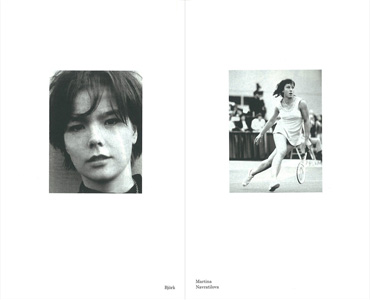

IT’S TIME FOR ACTION Migros Museum, Zurich. 2006
ART SEX MUSIC

Cosey Fanni Tutti of Throbbing Gristle, Chris and Cosey, Carter Tutti Void fame has announced a brand new autobiography coming out next April.
As a founder member of COUM Transmissions and Throbbing Gristle, Cosey has been at the fore-front of the art and music world since the late ’60s. Read a full description of the book below:
“Art Sex Music is the autobiography of a musician who, as a founding member of the avant-garde group Throbbing Gristle and electronic pioneers Chris & Cosey, has consistently challenged the boundaries of music over the past four decades.
“It is the account of an artist who, as part of COUM Transmissions, represented Britain at the IXth Biennale de Paris, whose Prostitution show at the ICA in 1976 caused the Conservative MP Nicho-las Fairbairn to declare her, COUM and Throbbing Gristle ‘Wreckers of Civilisation’ . . . shortly be-fore he was arrested for indecent exposure, and whose work continues to be held at the vanguard of contemporary art.
“And it is the story of her work as a pornographic model and striptease artiste which challenged assumptions about morality, erotica and art.
“Art Sex Music is the wise, shocking and elegant autobiography of Cosey Fanni Tutti.”
The book will be published by Faber and Faber in April 2017.
http://louderthanwar.com/news-cosey-fanni-tutti-announces-new-autobiography-art-sex-music/
*
p.s. Hey. The blog will be on a short vacation tomorrow and Wednesday because I’m flying to Vienna today for an event there occasioned by the publication in German of ‘I Wished’ plus a screening of ‘Permanent Green Light’. If by some chance you’re around there, it’s tomorrow night. Here’s the info. I think it might be sold out, but check. The blog will be back in its usual form on Thursday. Since that leaves you two days with nothing new to see here, I thought I would tide you over by restoring this rich, comprehensive post about the inimitable Cosey Fanni Tutti, put together by d.l. Ben ‘_Black_Acrylic’ Robinson some years ago. Have a great time unfurling it. ** tomk, Hi! I look forward to reading the short piece/excerpt upon my return to the homefront. I obviously hope you never get to the point that you have to freak out. Any university would be starry to have you, and I hope a deserving one takes the bait. ** Jack Skelley, Skelldaddle! Yep, Shelly is a Tetra. Try, man. Dang on the other two Youths’ unavailability. Well, there’s still Kim? Happy to think here fills in that blank, bud. xoxo ** Misanthrope, My schedule is in a TextEdit thing that I always leave open on my desktop just in case. How interesting, ha ha. Someone needs to invent an app that sprinkles one’s partly finished prose and poetry with the writer equivalent of catnip. ** Sypha, Glad you did. Yes, it’s true it’s been ages since I’ve seen you type droolingly about power electronics. I did try à;GRUMH yesterday, and it sounds pretty dated. Curious about this medieval project. ** _Black_Acrylic, First of all, thanks again from the future for making today’s post supreme. Wow, Martin Creed should know that. I’ve still never listened to an audiobook. Strange, really. I hope Big Sam’s relative initial success has legs and very muscular ones. ** Cody Goodnight, Hi, Cody. Yay! Now the real world has you in its maw, and hopefully the true fun begins. And a very happy birthday to you. I’m assuming Italian is your favorite cuisine? I hope you heavily reward yourself today. ** A, Really good games just use ‘winning’ as a kind of lure to keep players moving forward in my opinion. I read the Mastbaum, but not the Leddick. It seems like ages since Blair has published a book, but maybe I’m out of it. XY, wow, flashback. I had no idea it was still in the present tense. One of my ex-bfs was a popular XY sexpot way back. Cool thanks about the feature idea. Yeah, sorry, I’m still in a post-filming daze and massively behind on correspondence. I’ll try to use the Vienna trip as a game changer. * * Kettering, Hi. Sadistic, ha ha. Oh, wow, I wish I’d come across that video for the post. I did actually have that ‘Pigpen’ Saeborg piece in some post here at some point. I can’t remember the context. Yeah, it’s crazy. Oh, thank you so much for the kind, amazing words. That’s extremely heartening. The Philippe section of ‘Closer’ is still one of my favorite things of mine, so, yeah, thank you! I don’t think I’ve read that particular Finbow book, but I do like his writing. Sure, I’m more than happy to talk writing stuff specifically. I’m a bit of a process junkie, you know. The p.s. context isn’t great for lengthiness, but, sure, I’d be happy to. Well, thank you everything too. Sincerely. ** Steve Erickson, Ah, La Tene, okay. I’ll have another look. Ouch! Be easy on your ankle, not that you have a choice, I guess. So sorry to hear that, Steve. ** Dominik, Hi!!! Yeah, he’s pretty amazing: Matsumoto. You can only buy Pop Tarts here in the American food store and in the British/American food store. The latter is just down the street from me, though. I would have to say my favorite Pop Tart is the blueberry one. The frosted cinnamon one isn’t bad either. Not that Pop Tarts aren’t kind of bad in general. Fun bad in tiny doses. I’ll be in your future hometown in about four hours. So curious about it. I weirdly don’t even have a mental image of what it looks like. I’m guessing it looks old like Paris but differently old. My weekend was pretty blah, I think. I saw some friends and ate an amazingly good pizza and went to a reading at a bookstore but the author spoke very quietly and mumbled in French so I didn’t understand a word. I accept the offer to be love’s date! Love giving me a ride to the airport, G. ** alex, Hey, alex! Yeah, right? About the Matsumoto. I will check out that Yellow Swans album. I think I learned a lot about structuring/architecting fiction from listening to and studying Autechre. Yes, I had no idea there are islands in/around Toronto. See, that sounds so exciting, your description of sailing, and since you’re doing it on the relative stillness of a lake, it might even be doable for me. I’ve only sailed on oceans, rough oceans. Sweet! ** Bill, Hi, B. Happy that a couple of the books intrigued. Duval and Rowlands were in a movie together? A not very good movie? Double surprise there. I hope your week has dawned lustrously. ** Right. You already know what you have before you, blog-wise, so do that, and I’ll see you back here on Thursday.
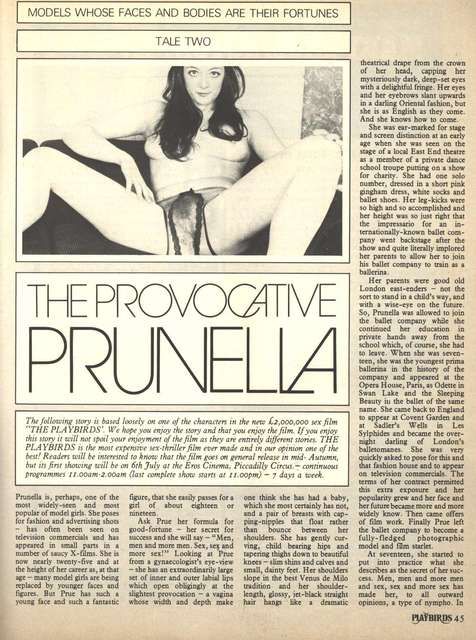
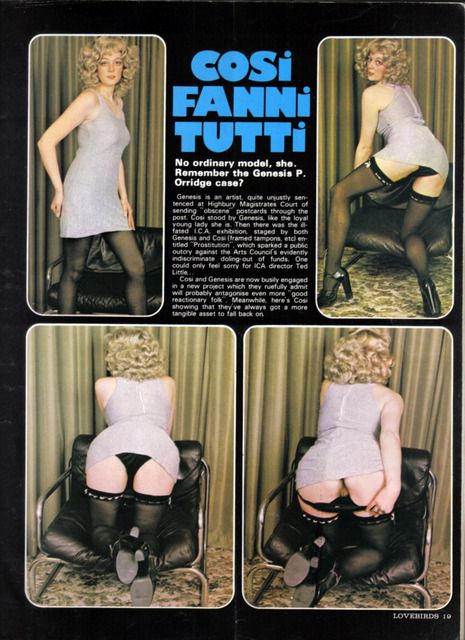




 Now available in North America
Now available in North America 
Hi!!
Enjoy your Vienna trip! And, of course, please let me know about both the event and your experiences! I’m not familiar with the entirety of the city either (yet), but in general, it resembles Budapest quite a lot. If Budapest were in better shape – fewer dying buildings and less trash on the streets.
I hope love was kind enough to give you a ride to the airport! At least you don’t have to worry about any jet lag this time! Love trying to stop Dead or Alive’s fucking “You Spin Me Round” going in a loop in his head, Od.
P.S. Thank you for restoring this post! And thank you, _Black_Acrylic, for putting it together! I can’t wait to dive in after work!
Ah this post just reminds me that a huge percentage of my friends were very close with GenesisPOrridge. Yeah Blair and xY both flashbacks — would love to see pics of your xY sexpot ex of course. Hope you and Zac enjoy Vienna and no worries about being behind the correspondences. I just like to pass on messages to Stefan, but hey this week let me know through Stefan if Z gave you the ARC successfully and I can have my peace of mind that it arrived with you properly on time, instead of catastrophic fears of it being lost again like it was in Paris. Have a banger trip/event.
Dennis, Have a good, safe trip. Sounds like it’ll be fun. And cool that “I Wished” is in yet another language now.
Does it need to be said? Okay, I’ll say it anyway: our Ben is a STAR.
Nice to see this Cosey day back, I dug her book ART SEX MUSIC (and I think I read somewhere she had a new book coming out/maybe out already?). Maybe I should relisten to my Chris & Cosey albums one day, though I lost track of them post late 1990’s.
Oh, the medieval research is mainly for a new fantasy trilogy I’ve been kicking around in my head. I like the idea of taking that most hackneyed of genres (that is, fantasy novels inspired by Western European medieval iconography) and seeing if I can do something interesting with it. One thing I’ve been considering doing is writing the dialogue in the Early Modern English style (ala Shakespeare, who I’ve become very interested in again recently), or at least a faux version of it.
Mr. Cooper— You sound like you’re standing in a river of people/projects/deadlines/expectations—I may be long-winded when it comes to my excitement, but I’m also low-maintenance. So when I learn that the Philippe chapter is one of your favorite pieces, it confirms my intuition about the writing. Gives me plenty to chew on, in and of itself, you know? So. Have a lovely week in Vienna! -K. (P.S. Did you wind up going to Guyotat’s grave this past weekend? There’s not usually much of the actual person at their grave, if you know what I mean– though right after Warhol died a friend and I went to his grave– it’s super close to where I lived, well, that was before he was moved to NYC I think. There were the expected multiple soup cans, etc. The ‘grave goods of fame’. Ha.). -k.
Hi Dennis. How are you?
Thank you very much! I hope you have a lovely vacation! I had a nice birthday. I do really love Italian food, yes. I had some lovely ziti and tiramisu last night. I also hung out with some friends and just had a nice time. I’ve rewarded myself by rewatching John Waters’ Polyester, a really fun, funny movie. John Waters is my hero. I love everything he’s done and I have spent my entire day watching interviews with him. Do you have a favorite Waters film, Dennis? Mine is Female Trouble, as it’s my all time favorite film alongside Brian De Palma’s Phantom of the Paradise. Have a great day and a lovely vacation!
Funny, I was also thinking about Saeborg’s inflatable pigs piece for the balloons post, but couldn’t remember her name. She’s hilarious in this doc:
https://letterboxd.com/film/queer-japan/
Good to see Ben’s Cosey day again. I had to laugh out loud at the Prunella poster; I just ate at a restaurant called Prunella a few weeks ago. No connection I’m sure.
Have a great time in Vienna, Dennis. Hope you enjoy the screenings, the art and the cake.
Bill
hey man,
hope vienna was cool and the crowd was into Permanent Green Light. I meant to tell you that I went to Paris while you were away filming. We went to an amazing rave/space that I’m blanking on now. It used to be a railway station i think? It was so good.
fingers crossed about the work…unfortunately there’s no route to uni for me and I can’t teach in a state school cause I don’t have the certificate so I’m kinda limited to independent schools etc. Ugh, work. It sucks.
tomk
Trump Guilty
https://www.youtube.com/watch?v=_IyMtWqgrYA
Sunday Bloody Cosi
PT 2. I just told Bret this because I’m in total shock, but my publisher just emailed me out of the blue saying the Distribution Team were so offended by the book, they were worried teenagers are going to re-enact the disturbing behaviour depicted and are demanding a ‘trigger warning’ or ‘content warning’ in the front. I think this is tremendous news! I was a bit nervous people would be turned off by the slower-menacing pace of the beginning but now a content warning, could work in my benefit? I was given a choice: content warning or we won’t stock it in stores. I’m first off flattered that Simon/Schuster who receive thousands of books a day, decided to flag mine! My little novel. Cheers DC!
@ DC, thank you for restoring this day! Must have been quite an effort, what with the PhotoBucket tag being on all of the images since my subscription with them expired.
@ Dominik, hope you enjoyed a worthwhile dive.
@ A, GPO doesn’t come out of her book at all well. Still, to many I’ll bet he was a fun guy to be around.
@ Misanthrope, *blushes*
@ Sypha, she has this new book about her fellow female electronic music pioneers. It’s no doubt pretty good.
@ Bill, hope you had a good time with the provocative Prunella!
My ankle is improving slowly. I can walk further each day, although my mobility is still pretty limited and I have to be very careful on stairs. Having to spend so much time has been very draining.
I watched LOST HIGHWAY yesterday, for the first time since its original release. I wasn’t crazy about it back then, but it seemed much better. In many respects, it’s a product of its time: the neo-noir touches, industrial metal soundtrack, even the attitude that video was a newly sinister technology. But the passage of time and the ubuquity of surveillance also makes it feel prescient, and the scenes with Robert Loggia almost seem like a parody of violent post-Tarantino ’90s cinema. It would make a great double feature with Abel Ferrara’s THE BLACKOUT, made the same year.